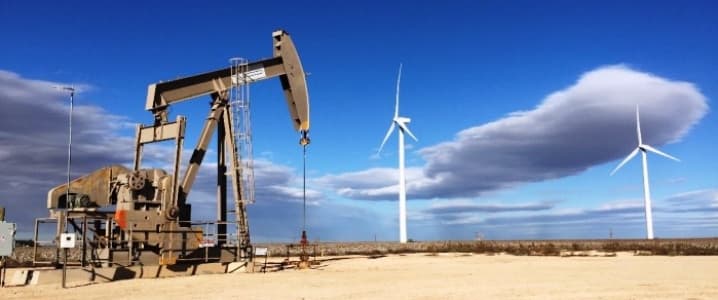The world’s top shale play, the Permian, has shown remarkable resilience amid the lower-for-longer oil prices. Permian production has grown and should continue its rise into the foreseeable future.
Technological advances spurred the rapid rise of the Permian, but as drillers are set to continuously develop the hottest U.S. shale play, they may soon start to test the region’s geological limits.
If E&P companies can’t overcome the geological constraints with tech breakthroughs, Permian production could peak in 2021, putting more than 1.5 million bpd of future production in question, and potentially significantly influencing oil prices, energy consultancy Wood Mackenzie said in an analysis this week.
According to EIA’s September Drilling Productivity Report, the Permian will pump 2.580 million bpd of oil this month. Crude oil output is set to rise by another 55,000-bpd next month, to 2.635 million bpd. The Permian, as usual, contributes the most to the expected production growth out of the top U.S. shale plays.
Wood Mackenzie’s report, “Geology vs. technology: how sustainable is Permian tight oil growth?”, modeled three scenarios for the Permian’s production. Under the reference-case scenario, Permian production is set to rise to more than 5 million bpd in 2025. Peak production could increase by 500,000 bpd over WoodMac’s base case in a modeling scenario where new technology adoption accelerates more aggressively, the consultancy said. However, “downside risks related to tighter well spacing and well-on-well interference could bring peak Permian production forward by 4 years compared to the upside case—putting more than 1.5 million b/d of future production in question,” Wood Mackenzie reports.
The analysis points out that many other shale plays prove that the initial years of development are typically the easiest. In order to keep well performance on par with the initial flows, drillers need more tech breakthroughs “to keep their barrels at the bottom of the cost curve.”
“In the Permian, the growth challenge could relate to the industry ultimately finding hard subsurface limits for tight oil recovery,” states WoodMac.
The consultancy’s analysis showed that well interference during fracking could cut the future estimated ultimate recovery (EUR) value by 30 percent compared to today’s EURs.
“These reservoir issues could begin to manifest as sweet spots become exhausted. Taking into account some bearish assumptions, if future wells tap more difficult rocks, and are not offset by continued technology evolution, the Permian may peak in 2021,” Robert Clarke, Research Director for Lower 48 Upstream at Wood Mackenzie, said.
Related: Supermajors Prepare For A Permian Bidding War
One of the biggest reservoir risks is the so-called ‘parent’ and ‘child’ wells. Child wells are those infill wells located next to older wells. While child wells are currently only a small portion of the Permian wells, as drilling and production expands, more child wells will be drilled.
“Leaning on history again, we believe future child wells, because they're effectively drilled into pressure sinks, could have EURs 20-40 percent smaller than their parent producers. This would massively impact production growth and also limit the amount of cash flow available for reinvestment,” the report’s co-author, Alex Beeker, Senior Research Analyst at Wood Mackenzie, said.
This is just one of the three scenarios outlined in the report—downside reservoir risks if technology doesn’t catch up to overcome geological constraints in the future.
Forecasts are that production will continue to grow aggressively in the next few years, and many parent wells will see their EURs keep rising.
ADVERTISEMENT
“The technology vs. geology tug-of-war has the ability to profoundly alter the future production profile of the region, and ultimately oil price. Less Permian supply from 2021 onwards would exacerbate the global supply gap and effectively mean the U.S. cannot deliver what the market believes it can. Other sources of higher cost, conventional production would be needed,” WoodMac’s Clarke noted.
We’re still four years away from 2021. In the oil market, even four months is a long period to correctly predict the future price of oil. Technological breakthroughs depend not only on engineering, but also on oil prices, oil supply, oil demand, and drillers’ financial resilience to be able to switch from survival to growth mode.
By Tsvetana Paraskova for Oilprice.com
More Top Reads From Oilprice.com:
- Mexico’s 2018 Election Could Derail Its Oil Boom
- Does Canada Need More Oil Sands Pipelines?
- Could Kurdish Independence Spark An Oil War?


















